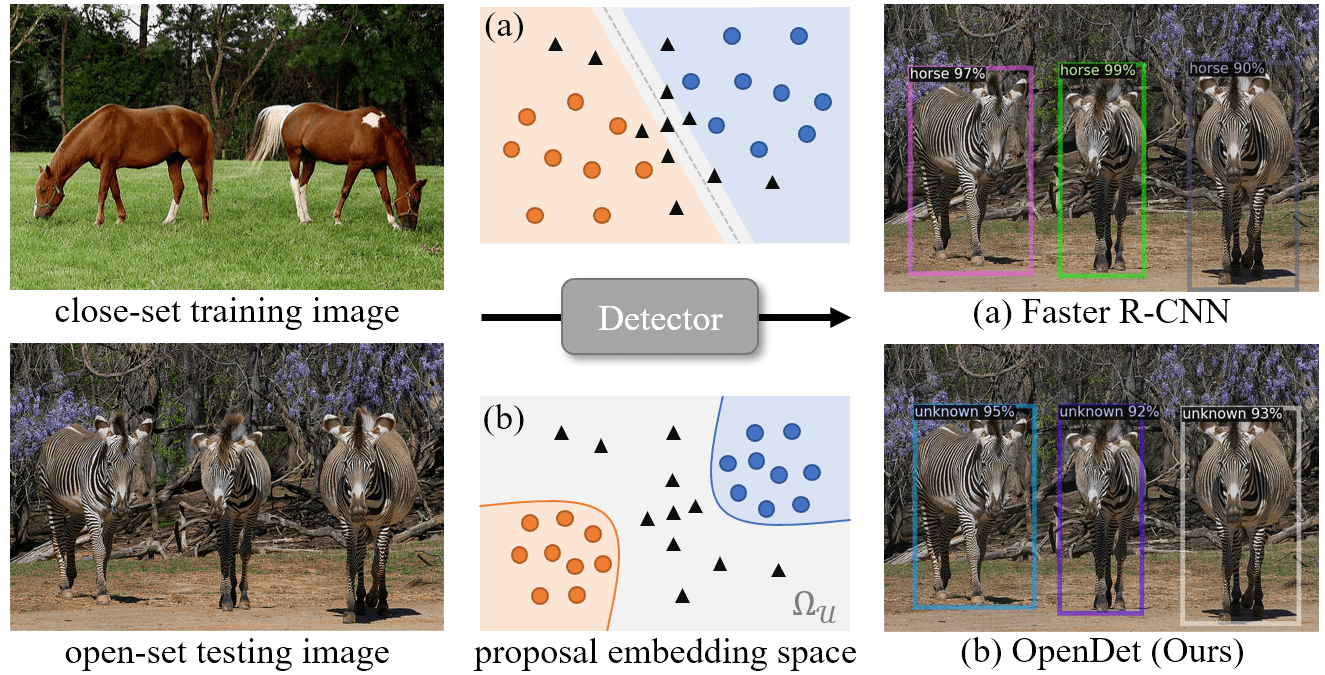Expanding Low-Density Latent Regions for Open-Set Object Detection
Modern object detectors have achieved impressive progress under the close-set setup. However, open-set object detection (OSOD) remains challenging since objects of unknown categories are often misclassified to existing known classes. In this work, we propose to identify unknown objects by separating high/low-density regions in the latent space, based on the consensus that unknown objects are usually distributed in low-density latent regions. As traditional threshold-based methods only maintain limited low-density regions, which cannot cover all unknown objects, we present a novel Open-set Detector (OpenDet) with expanded low-density regions. To this aim, we equip OpenDet with two learners, Contrastive Feature Learner (CFL) and Unknown Probability Learner (UPL). CFL performs instance-level contrastive learning to encourage compact features of known classes, leaving more low-density regions for unknown classes; UPL optimizes unknown probability based on the uncertainty of predictions, which further divides more low-density regions around the cluster of known classes. Thus, unknown objects in low-density regions can be easily identified with the learned unknown probability. Extensive experiments demonstrate that our method can significantly improve the OSOD performance, e.g., OpenDet reduces the Absolute Open-Set Errors by 25%-35% on six OSOD benchmarks. Code is available at: https://github.com/csuhan/opendet2.
PDF Abstract CVPR 2022 PDF CVPR 2022 Abstract




 MS COCO
MS COCO